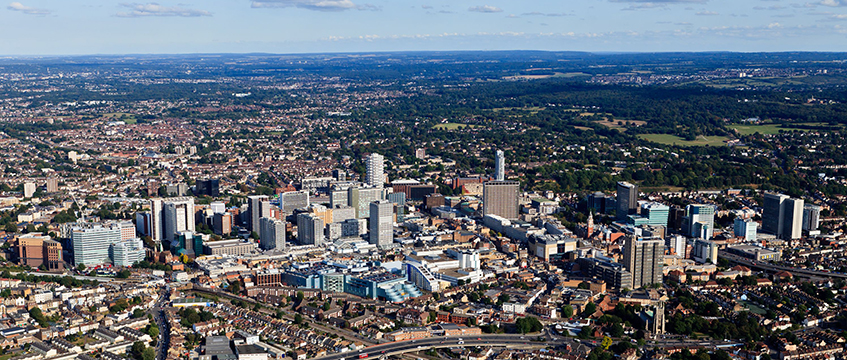Maybe Croydon doesn’t need a facelift, just a little botox
EDITOR’S COMMENT I can’t quite decide whether to feel sorry for Croydon or angry on behalf of anyone who calls it home.
I remember writing about plans to regenerate the town centre when I joined EG as a reporter back in 2004. Stories over those first few years in the job centred around Minerva and its doomed plans for the 900,000 sq ft Park Place scheme. It was a scheme envisioned in the late 1990s, which got consent in 2000 before eventually having the plug pulled on it in 2009.
Park Place would have brought the town centre together, with a new mall being built on the Allders department store site. It was going to be just what the town needed. Croydon had an opportunity to be something. It must have, because Nigel Hugill, then the big cheese at Lend Lease Europe, was willing to buy a 50% stake in the project.
EDITOR’S COMMENT I can’t quite decide whether to feel sorry for Croydon or angry on behalf of anyone who calls it home.
I remember writing about plans to regenerate the town centre when I joined EG as a reporter back in 2004. Stories over those first few years in the job centred around Minerva and its doomed plans for the 900,000 sq ft Park Place scheme. It was a scheme envisioned in the late 1990s, which got consent in 2000 before eventually having the plug pulled on it in 2009.
Park Place would have brought the town centre together, with a new mall being built on the Allders department store site. It was going to be just what the town needed. Croydon had an opportunity to be something. It must have, because Nigel Hugill, then the big cheese at Lend Lease Europe, was willing to buy a 50% stake in the project.
Back in November 2006, upon conditionally signing the deal, he said: “Twenty-five years ago, Croydon was among the strongest 10 retail locations in the UK. Although a lack of investment has brought about a fall in the UK hierarchy, there are now probably more unsatisfied requirements from major retailers for large modern space in Croydon than in any other location in the country. We are very excited about the ability of Park Place to recapture retail spend by lifting the quality of the offer to a level which we are confident the catchment will support.”
John Lewis was going to be the saviour of Croydon, recapturing that retail spend. The Park Place team was working hard to make sure the country’s (then) favourite retailer set up home in the town centre. John Lewis was of course its demanding self. Back then JLP could pretty much ask for anything and a developer would agree to it. A billion years rent-free? Sure! All your fit out costs paid for? Sure! A complete redesign of an entire town centre to ensure you get the footfall pattern you want? Erm…
Minerva tried, but ultimately John Lewis decided not to sign up for Park Place. And that was pretty much the end of that. That and the cash-for-peerage scandal that hit Minerva. But that’s a whole other story.
Despite that failure, Croydon had its head turned again by the promise of a big shiny retail solution to the town centre’s failings. Imagine redeveloping the crumbling Whitgift Centre and Centrale mall together to create a £1bn scheme with some 1.5m sq ft of shops, nearly 1,000 homes and John Lewis as the anchor. Let’s do it, they all thought. Hurrah! This really will be the Croydon facelift we know we need. Let’s borrow a stack of money (because this time it will definitely work) and let’s start CPOing.
Westfield and Hammerson should have been great partners to bring about flagship retail development. Both knew shopping malls. But even by 2014, when outline planning for the by then £1.4bn scheme was given, the retail environment was shifting. By 2018, when a second outline planning permission was received for an even bigger scheme, the writing was on the wall.
I’m sure many knew that. But so much time, so much effort and so much money had been spent on this vision for Croydon that no-one was quite willing to let it go. It took new ownership at Westfield and new leadership at Hammerson to quietly let consent for the scheme lapse this year.
The official death knell for the project, confirmed in council papers on the post-Covid vision for the town centre this week, is probably the best thing that could have happened.
Investment from the private sector will be vital, so it is great that Hammerson and Unibail-Rodamco-Westfield say they are still committed to Croydon, but the new vision needs to focus less on the big, shiny developments and more on proper town management and what Croydon’s people need. More on community, jobs, innovation and on building back better.
See also: What went wrong with Croydon’s Whitgift plans?
To send feedback, e-mail samantha.mcclary@eg.co.uk or tweet @samanthamcclary or @EGPropertyNews
Photo by High Level/Shutterstock











